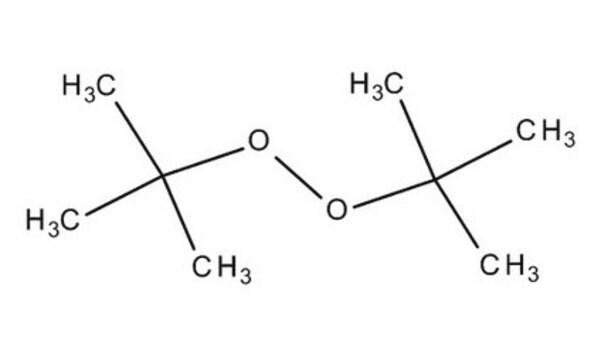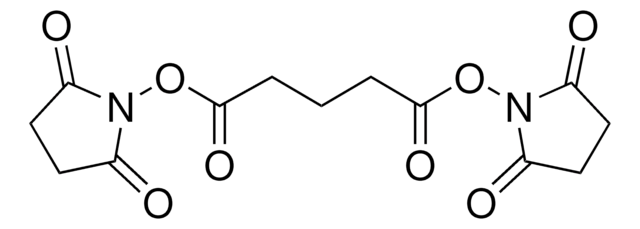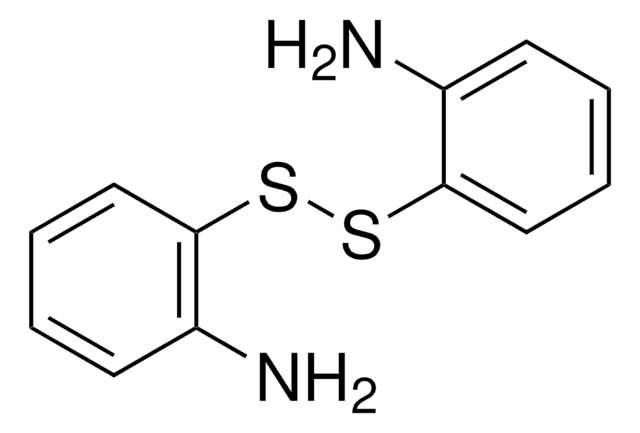D2388
Dimethyl 3,3′-dithiopropionimidate dihydrochloride
powder
Sinonimo/i:
DTBP, Dimethyl 3,3′-dithio-bis(propionimidate) dihydrochloride, Wang/Richards’ reagent
About This Item
Prodotti consigliati
Forma fisica
powder
Impiego in reazioni chimiche
reagent type: cross-linking reagent
Solubilità
H2O: 50 mg/mL
Temperatura di conservazione
2-8°C
Stringa SMILE
Cl.Cl.COC(=N)CCSSCCC(=N)OC
InChI
1S/C8H16N2O2S2.2ClH/c1-11-7(9)3-5-13-14-6-4-8(10)12-2;;/h9-10H,3-6H2,1-2H3;2*1H
CQBCVFHLZAVNPF-UHFFFAOYSA-N
Cerchi prodotti simili? Visita Guida al confronto tra prodotti
Applicazioni
- Synthesis of glutathione-sensitive cross-linked polyethylenimine gene vector
- Preparation of cyclodextrin-containing polymers designed for gene delivery
- Crosslinking of chick oviduct progesterone-receptor subunits
Avvertenza
Altre note
Avvertenze
Warning
Indicazioni di pericolo
Classi di pericolo
Skin Irrit. 2
Codice della classe di stoccaggio
11 - Combustible Solids
Classe di pericolosità dell'acqua (WGK)
WGK 3
Punto d’infiammabilità (°F)
Not applicable
Punto d’infiammabilità (°C)
Not applicable
Dispositivi di protezione individuale
dust mask type N95 (US), Eyeshields, Gloves
Certificati d'analisi (COA)
Cerca il Certificati d'analisi (COA) digitando il numero di lotto/batch corrispondente. I numeri di lotto o di batch sono stampati sull'etichetta dei prodotti dopo la parola ‘Lotto’ o ‘Batch’.
Possiedi già questo prodotto?
I documenti relativi ai prodotti acquistati recentemente sono disponibili nell’Archivio dei documenti.
I clienti hanno visto anche
Articoli
Kanjiro Miyata (The University of Tokyo, Japan) provides insights on the rational design of polymeric materials for “smart” oligonucleotide delivery.
Il team dei nostri ricercatori vanta grande esperienza in tutte le aree della ricerca quali Life Science, scienza dei materiali, sintesi chimica, cromatografia, discipline analitiche, ecc..
Contatta l'Assistenza Tecnica.











